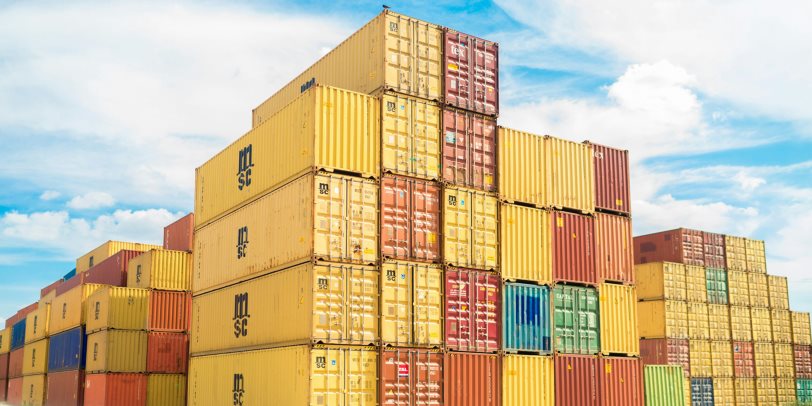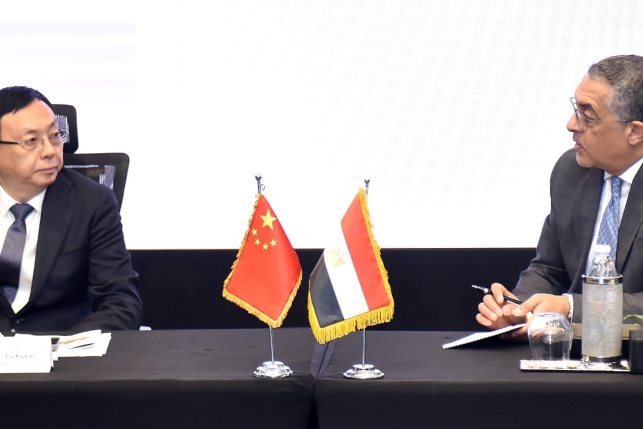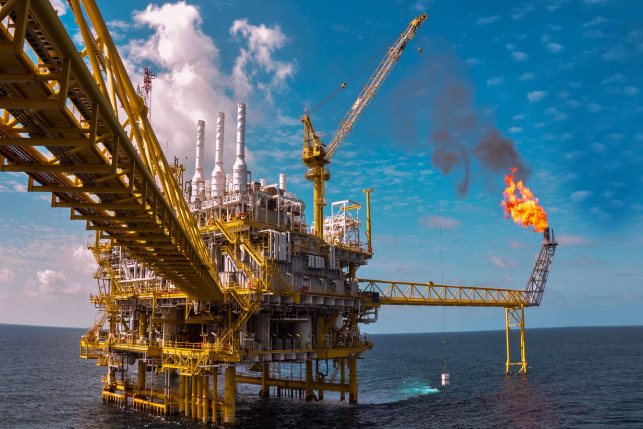Navigating choppy waters | How Egyptian Trade fared in 2021
Stepping into 2022, we take a look back at Egyptian trade as it navigated the choppy waters of a global supply chain crisis, a 6-day blockage of one of the country’s main trade hubs and more

Despite a 2-year pandemic that continues to disrupt vital channels of trade, the Egyptian trade sector remains strong, battling its effects to support the Egyptian economy during a rough few years.
Stepping into 2022, we take a look back at Egyptian trade as it navigated the choppy waters of a global supply chain crisis, a 6-day blockage of one of the country’s main trade hubs, pandemic restrictions, trade packages, and increases in commodity prices.
Kicking off the year with bad weather and a clogged canal
As the pandemic kept people indoors, consumer demand shifted from experiences and services to products, creating a higher demand for goods that, combined with the effects of pandemic restrictions, saw ocean shipping costs skyrocket for most of the year.
The sudden surge in demand made an already complicated system for transporting goods, whether direct to consumer or to manufacturing factories, more complex as factories lobbied for more items to build finished products while finished products – many coming from China – flooded warehouses and ports due to movement restrictions and a shortage of shipping containers.
Egypt’s Suez Canal, one of the world’s main trade arteries between Asia and Europe, was an integral part of that global supply chain, one that saw an almost 6-day blockage that caused an estimated $400 million in losses per hour in early 2021.
In Mid-March, container ship EverGiven, noted to be longer than the Eiffel Tower, ran aground, citing bad weather and visibility that caused it to accidentally wedge itself in the canal, effectively blocking traffic on a trade route that handles around 10% of global trade.
By day 5, March 28, there were a total of 321 vessels waiting on both ends of the Suez Canal, contributing to Brent crude prices to drop to its lowest since February 2021, with Suez Canal Authority (SCA) Chairman Osama Rabie pointing out that the canal handles around 61% of global oil tanker traffic.
See how the world reacted > The world memes #SuezCanal troubles
Eventually, the ship was refloated in day 6, and a financial settlement was agreed upon by both the SCA and the container ship’s owners and insurers months later. Previously, the SCA had requested $1 billion in compensation for the expenses of using dredgers and tugboats in the refloating process, before lowering the number to $916 million and then to $550 million.
Despite the mishap, it saw revenues climb 2.2% to hit a record of $5.84 billion in its 2020/2021 financial year, and recorded its highest monthly tonnage in its history with 112.1 million tons passing through the canal in October 2021, making 2020/2021 the canal’s best year so far.
At the end of 2021, the Suez Canal recorded a historical $6.3 billion in revenues, the highest in its recorded history, according to Rabie.
Trade Packages and Increased Trade
With a surge in demand came increased pressure for exporters, including those based in Egypt, which were already dealing with higher shipping costs, and both staff and container shortages.
In order to support exporters during the pandemic, the Egyptian government launched its immediate payment initiative through the Export Development Fund, distributing around EGP 20.6 billion to thousands of companies, contributing to Egyptian exports exceeding $31 billion, according to Minister of Trade Nevine Gamea.
The initiative, launched by the Ministries of Trade and Finance in November 2020 alongside the Central Bank of Egypt and several participating banks, was established with the intention to provide cash liquidity to exporting companies, allowing them to fulfill their obligations towards their clients and maintain employment.
In the first phase of the initiative, the fund distributed a total of EGP 13.2 billion to 1069 companies. The second phase distributed to 923 companies a total support worth EGP 4.6 billion, with the third phase reaching EGP 1.8 billion to over 700 companies.
Want to stay up to date with Trade news? Read the latest Egyptian trade news here
Buoyed by the support, exports in 2021 saw significant climbs.
Egyptian exports overall jumped by 24.5% in the last 10 months, with the local industrial sector accounting for 17% of GDP, explained Trade Minister Gamea in December.
Egyptian exports jumped by 40% in the first 9 months of 2021, recording $29.7 billion in the January-September months, while non-petroleum exports jumped by 26% year-on-year (YoY), reaching $26.9 billion during the first 10 months of 2021.
Engineering exports hit the $3 billion mark in the 11 months of 2021, up by 45%, for the first time in Egypt’s history, while the country’s overall trade balance deficit fell 22.5% in September 2021, credited to a 36.6% increase in exports.
Additionally, the government has allocated EGP 4.2 billion in order to support the export sector in light of the presidential directives to increase the value of Egyptian exports to EGP 100 billion over the coming three years.
The government also launched the new – and mandatory – Advanced Cargo Information (ACI) system, which aims to improve Egypt's global index in the field of cross-border trade and facilitate import operations and customs clearance procedures, enabling them to pay 30% of dues in advance for their cargo before its arrival to Egyptian ports. The CBE recently signed a cooperation protocol the Ministry of Finance
Egyptian imports saw a 16% increase in the first 9 months of 2021, climbing to $61 billion from $52.2 billion in 2020’s first 9 months, while Egyptian imports climbed in September 2021 by 8.2% to reach $5.84 billion.
According to Head of the Internal Trade Committee of the General Division of Importers at the General Organization for Import and Export Control’s (GOEIC), prices of imported goods are at a rate of between 20% and 30%, leading to an abundance of goods in general, whether imported or local, due to the country’s pre-COVID recession.
Commodities Rising
In its most recent report, the Central Agency for Public Mobilization and Statistics (CAPMAS) revealed export growth in commodities such as fertilizers (90.2%), Iron rods and wires (57%), food preparation items (31.5%), and ready-made garments (22.6%).
On the other hand, CAPMAS attributed the climb in import values to the increase of imported plastics (in primary form) by 24.2%, crude oil by 53.2%, medicines and pharmaceutical preparations by 33.9%, and raw materials of iron or steel by 8.2%.
The Engineering Exports Council (EEC) in December stated that the highest growing engineering export sectors in the 11M of 2021 were tableware and Cables by 97%; Home Appliances 48%; Electrical Products 41%; automotive parts by 41% and electrical and electronic industries by 31%.
Want to stay up to date with Trade news? Read the latest Egyptian trade news here
Egypt’s Trade Challenges for 2021
Egypt will have to deal with the same issues plaguing the global economy, as it becomes increasingly clear that the pandemic isn’t going to stop anytime soon as Omicron seems far more contagious than previous strains, and could possibly cause renewed shutdowns and extend supply chain issues.
However, a slew of subsidy packages, financing initiatives, the country’s ongoing reform program and efforts towards building multilateral trade relationships has allowed Egypt to skirt most of the pandemic’s negative effects compared to other emerging economies.
While keeping Egypt’s success as one of the only countries to maintain positive GDP growth in mind, the potential for more uncertainty in the coming year remains.
As Egypt remains attentive towards its integration into global trade through modernizing its systems and reducing trade barriers, such as the Nafeza system, 2022 could see Egypt’s potential as an even bigger trade hub blossom.





